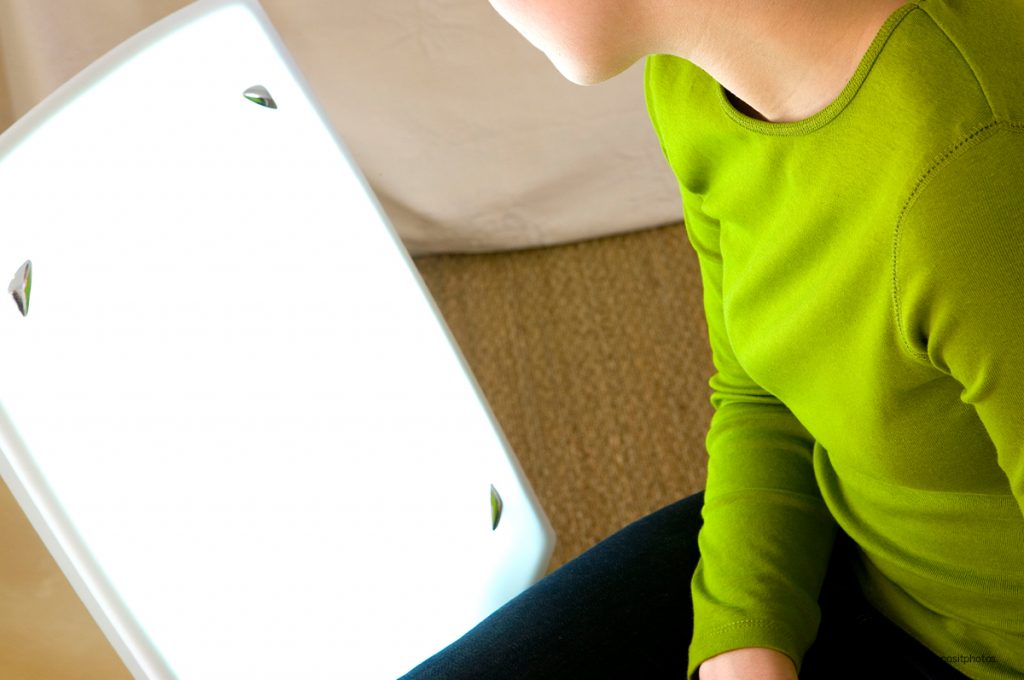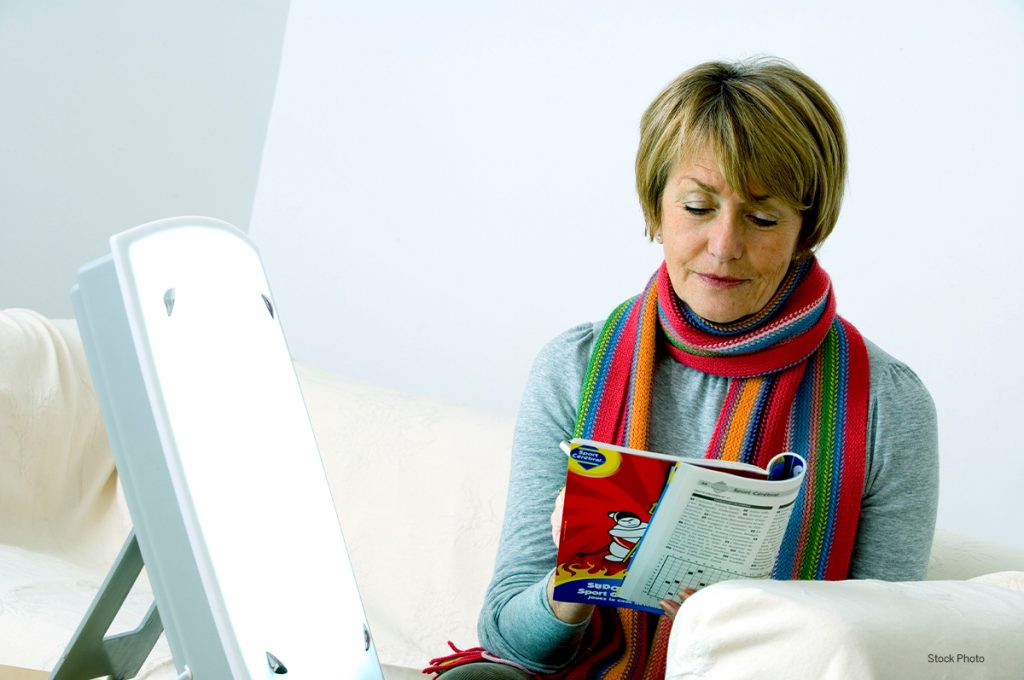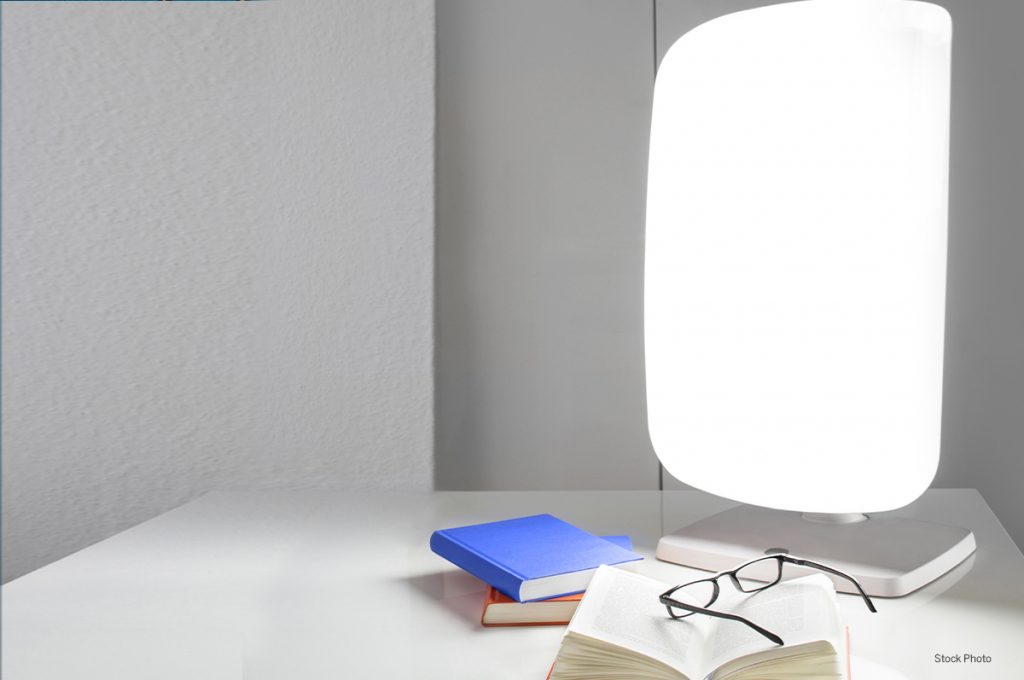This article may contain affiliate links. Clicking on or purchasing products we recommend through a link may earn a small commission. Read our disclosure and privacy policy page for details.
I noticed winter and gray days affect my mood and sleep, so when a friend told me they were using a light therapy box to combat similar feelings, I wanted to know more. I delved into the world of light therapy to find out what it was, how I could benefit from it, and whether it could make a difference in my mood. It turns out light therapy is a proven and helpful treatment that’s easy to incorporate into my daily life.
If you’re curious about light therapy, read on to discover its benefits, whether it’s right for you, and the details on how to find the best light therapy lamps available.
What is Light Therapy
Disclaimer: The content provided below is for informational purposes only. It does not substitute for professional medical advice or consultations with a healthcare professional. Please consult your doctor before beginning light therapy or using a light lamp.
Anyone who’s suffered from the winter blues knows how a lack of sunlight negatively affects mood. Depression and those low feelings experienced during the winter months are clinically known as SAD (seasonal affective disorder) and profoundly impact sufferers. Approximately 2-3% of Canadians will experience SAD in their lives, and it accounts for 10% of all depression cases in Canada (CMHA). SAD can range in severity from debilitating to mild, with symptoms first appearing in early fall and subsiding in spring.
Light therapy is a treatment that helps SAD. It is also referred to as phototherapy or bright light therapy and involves indirect exposure to artificial light. It is used to alleviate the symptoms associated with this seasonal depression and is also effective at treating other conditions such as:
- sleep disorders
- various types of non-seasonal depression
- jet lag
- dementia
- night shift fatigue
For light therapy to be work, you need to sit for a set time within close range of a light source that emits an intense light, similar to a bright sunny day. The light needs to enter at an angle through your retina, so your eyes must be open, but you should not stare directly at the light. Light therapy is known to ease SAD symptoms, improve mood, boost energy and maintain overall wellness.
Read more: How to Pamper Yourself at Home DIY Spa Day
Who Should Avoid Light Therapy
Make sure to refer to your doctor before starting light therapy or using a light lamp.
While generally considered safe, it is not for everyone. Avoid light therapy if you take medications that increase your sensitivity to light, such as antibiotics, anti-inflammatories, or St. John’s wort.
You should also avoid light therapy if you have any of the conditions below:
- Macular degeneration or other eye condition that makes your eyes vulnerable to light
- Connective tissue damage
- Existing skin cancers
- Diabetes
- Lupus
- Bipolar Disorder
Benefits of Light Therapy
Light therapy is non-invasive, convenient, quick, and can be done right in your home. There’s little you need to do aside from sit-down in front of a light source and carry out your daily activity.
For those suffering from SAD, light therapy could make all the difference. People often feel noticeably better within just a few days or upwards of a couple of weeks. The benefits of light therapy are significant and include:
- Improvement in mood
- Increased energy
- Greater focus
- Better sleep
- Improvement in overall wellbeing
While some mild side effects are related to light therapy, they may disappear on their own or resolve by changing the duration or intensity of treatment. Side effects include headache, irritability, eyestrain, nausea, mania, euphoria, or agitation related to Bipolar Disorder.
How Light Therapy Works?
Experts believe light therapy stimulates the production of chemicals in our brain that controls our mood and circadian rhythm (sleep-wake cycle). The increased exposure through the retina helps regulate those chemicals and provides lasting results.
To make the most of light therapy, here’s what you’ll need to do.
- Sit close to your light source for about 20- 30 minutes at a distance of 16-24 inches from your face (distance may vary according to manufacturer).
- Place the light source so that it falls on the eye from an angle but ensure you’re not staring directly into the light.
- Stick to an early morning routine. Use it consistently every morning after waking up and try to commit to the same time every day.
- Track your treatment. To prevent the premature return of SAD, note when you start treatment. Don’t interrupt it or end too quickly (before spring arrives).
Light therapy can be used alone but works best in conjunction with other treatments such as physical activity, exercise, psychotherapy, or a drug regimen.

What is a Sun Lamp or Light Box
Sun lamps, lightboxes, and light lamps all fall under the category of light therapy lamps. They are considered first-line therapy treatments for SAD and other conditions that improve with light exposure.
Modern light therapy lamps come with an array of features such as timers, dimmers, touch control, rotation, and more. They are also available in various styles and designs, so you can find one that best suits your décor or esthetic. They range in size from small units that can sit on your desk or table to floor models that can easily be tucked away in the corner of your room.
Are Sun Lamps or Light Lamps Safe?
Light therapy lamps are considered safe. But remember to avoid directly staring into the light. Lamps should be placed at an optimal distance – make sure to read the instructions for directions, as this may vary depending on the manufacturer and the light intensity.
Tanning beds and therapy lamps for skin conditions are not the same as light therapy lamps that treat SAD. These devices emit UV rays that are harmful to the skin and eyes.
To ensure you’re following the right treatment course with the light therapy lamp, refer to a doctor for guidance.
How to Incorporate Light Therapy into your Day
You can easily incorporate light therapy into your everyday life. Treatment sessions are short and only require you to sit close to the light. So you can perform regular activities like eating, reading, working, exercising, watching TV, and more while receiving treatment.
Research shows that light therapy is most effective in the morning. Stick to a protocol that incorporates a session after waking up. Avoid sessions later than noon so as not to disrupt your ability to sleep at night.
Read More: Yoga Essentials Best Yoga Equipment for Practicing Yoga at Home
Buying a Light Lamp What You Need to Know
If you’ve talked to your doctor and you’re ready to purchase a light therapy lamp, here are some specs you should consider when shopping. Look for lights that:
- Emit a cool white LED or fluorescent light.
- Generate 10 000 lux (luminous flux per unit area) of light, which is the accepted standard dose. If you purchase a model with less intensity, you will need to increase your treatment time. Alternatively, units with a higher power aren’t any more effective than those that generate 10 000 lux.
- Are UV-free and filter out UV light.
- Glare-free or have the option to angle down to prevent glare.
- Have a wide surface area of 12-15 inches to generate the maximum amount of lux. Lamps with smaller surface areas require longer treatment times.
Read More: Best Healing Crystals and How to Use Protection Crystals for the Home
Difference Between Sunrise Alarm Clocks and Light Therapy Lights
You may also have heard of sunrise alarm clocks or dawn simulators. As their name implies, these devices gently wake you using light to simulate a natural sunrise. Over a half-hour, they will rouse you from your sleep without the jarring noise or unnerving panic associated with traditional alarm clocks.
They differ from light therapy lamps because they turn on while you are asleep and grow in intensity. Also, they typically don’t generate the same intensity of light as light therapy lamps; however, they can help you wake up more peacefully.

Live it.
5 Best Light Therapy Lamps
Now that you’ve got all the information you need to make a purchase, here’s a look at the best light therapy lamps available. These are the lamps I narrowed down my search to, and I think you will be happy with any of these.
TaoTronics Light Therapy Lamp, Ultra-Thin UV-Free 10000 Lux Therapy Light
I bought this lamp after my brother suggested it. I have been using it now since January for 15 – 20 minutes a day in the morning. During winter, I have to say that when it was dark in my office and the days were shorter, this did help a little with my mood.
Buy it at Amazon US or Amazon CA.
The TaoTronics model I bought is a slim rectangular tablet design and had these features:
- A rotating stand that pivots 90 degrees, enabling me to use it in portrait or landscape as needed.
- Ability to dim the light using the “+ “or the “-” button set the ideal brightness.
- Easy-set, 30-minute timer, activated with a long press of the power button.
Verilux Happy Light, Bright White Light Therapy Lamp with 10,000 Lux
Like the TaoTronics above, the Verilux is a slim design and has dimmable features. The Verilux Happy Light also has an excellent reputation; however, I found this model’s stand to be limiting.
Verilux allows you to stand the unit in portrait orientations and can be mounted on a wall. Still, I preferred the functionality of the Taotronics rotating stand.
Buy it at Amazon US or Amazon CA.
Other Light Therapy Models to Consider
There are so many models of light therapy to choose from. I’ve included a few more options below. You may prefer a round model for décor esthetics or a smaller design for small spaces. The key is to find a lamp with 10000 LUX and make sure it has an option to dim the light as the brightness setting may be a lot when you first start your therapy.


